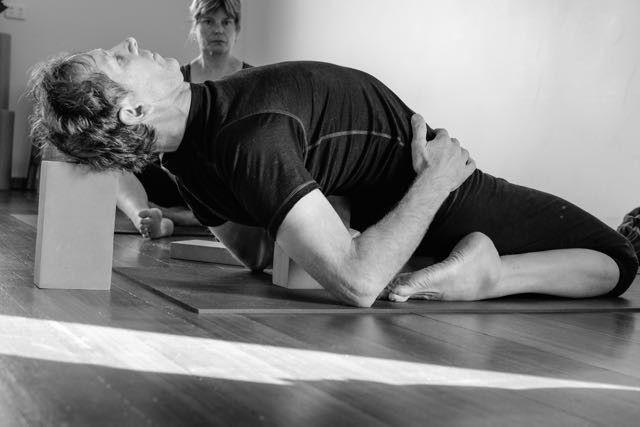Griffins Hill Retreat yoga and food blog
Home Practice: The benefits of not doing
By Frank Jesse
A lot of people tell me they dislike pranayama (breathing) and restorative classes. They’d rather be doing active classes full of dynamic poses. But there are a lot of benefits to not doing, and just being. We do so much in our busy lives! I’m not quite sure why people want their yoga classes to be always actively challenging as well. Of course, when we are doing poses actively, it can be easier to focus and to still the mind, which is the primary purpose of yoga.
However, when we are instructed to watch our breath or do poses with a lot of supports and hold them for an extended time, it is challenging on a different level. Many people find they are easily distracted and wonder at the benefits of these so-called quieter practices.
In these restorative asanas and pranayama, we can observe ourselves more deeply. We have the time to look past the more coarse movements of the body and to observe more subtle levels, such as the how as we relax, our breath softening, our eyes become soft and quiet, and with time and patience our mind slows down. We notice how fine the stream of air becomes as our breath slows down with the quieting and focusing of the mind. The restorative poses not only give us time to be quiet and still but are also very beneficial for our health, they improve our immune system, lower blood pressure and help to nourish the whole body. They are also perfect for replenishing energy if we are physically exhausted or recovering from illness and are also a great way to prepare us for pranayama.
There are many aspects to the way our body and mind works that are so subtle and easy to overlook. Practising pranayama and the restorative poses help us to become more aware of ourselves and to reach even more profound levels of stillness, higher levels of concentration, and to appreciate that there is more to life than always being active, or striving for an external goal. Below I provide two sequences, the first showing four postures suitable for beginners and should take about 20 minutes to complete.
Sequence 1




Note Viparita Karani (legs up the wall) is an inversion and should not be done during menstruation; also persons with detached retinas or high blood pressure should not do this pose without supervision from a teacher with experience in therapeutic yoga.
More experienced yogis can extend the sequence as below if time permits (Approximately one-hour practice)
Sequence 2









When you subscribe to the blog, we will send you an e-mail when there are new updates on the site so you wouldn't miss them.



